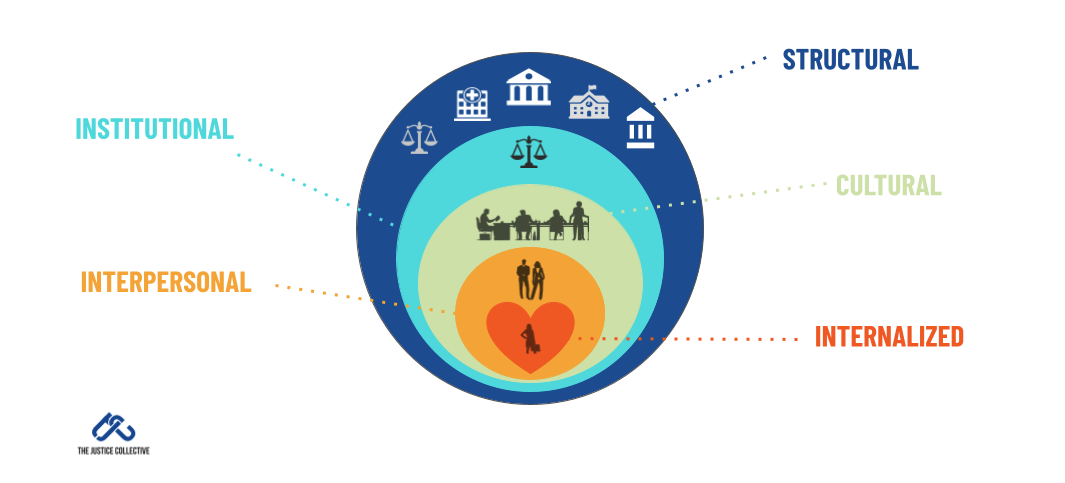Levels of Oppression and the Bracero Program
Our signature foundational training series emphasizes the importance of understanding the systems at play on multiple levels that have created the glaring inequities we see today. Oftentimes, we don’t even consider the scale with which oppression works. Depending on our own privilege and positionality, we may either be an observer or someone who directly experiences the impact of each level of oppression.
This levels of oppression graphic is one way we illustrate how these systems of oppression (racism, settler colonialism, sexism, ableism, heteronormativity, etc.) operate. We wanted to use a week when the labor movement leader, Cesar Chavez, is being celebrated to break down the Bracero Program of 1942 and how it impacted specifically Mexican immigrants at each level.
Levels of Oppression and the Bracero Program
You may be asking yourself — so how does each level work? Below we have broken down each level and their specific role in upholding oppressive systems.
To give you a better understanding, we wanted to examine the Bracero Program of 1942 and how the oppression of the Mexican laborers was upheld at each level. The Bracero Program was developed after Mexico and the United States came to an agreement and created the largest U.S. contract labor program. This program allowed millions of Mexican men to come to the U.S. to work on a short-term basis. These men, known as braceros (which translates to laborers) worked predominantly in agriculture.
While on the surface, the Bracero Program looks like a mutually beneficial agreement between two countries, what you see when you look a little closer is an exploitative labor program that only benefited the governments that agreed and the farmers who benefited from the bracero’s labor.
The Bracero Program is only one example that still has a lasting impact today. As we’ve demonstrated here, we must get into the practice of examining not only present key events, programs, policies, and cultural norms but the history behind them to understand the disparities we experience today.
If you’d like to learn more about the Bracero Program, here are some resources that we found helpful:
If you’re interested in learning more about our approach and how we can work with you and your organization, please reach out to us today!



